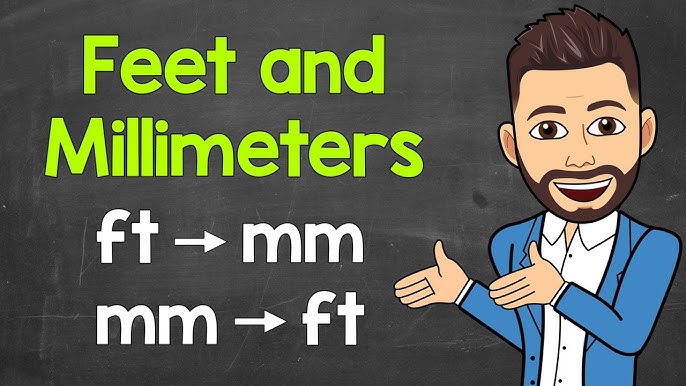Feet To MM: When converting feet to millimeters (mm), it’s essential to know the conversion factor: 1 foot equals 304.8 millimeters. This conversion is particularly useful in various fields such as construction, engineering, and tailoring. For example, if you have a measurement of 5 feet, converting it to mm would give you 5 x 304.8, which equals 1,524 mm. To make conversions easier, many online calculators can assist with feet to mm conversions instantly. Understanding this relationship can streamline tasks that require precise measurements, ensuring accuracy in your projects.
Understanding the relationship between feet and millimeters
Feet and millimeters are two units of measurement used in different systems. One foot is equivalent to 304.8 millimeters. Understanding this relationship can be helpful when converting measurements between these two units. For example, if you have a measurement in feet and need to convert it to millimeters, you can multiply the number of feet by 304.8 to get the equivalent length in millimeters.
Conversely, if you have a measurement in millimeters and need to convert it to feet, you can divide the number of millimeters by 304.8 to get the equivalent length in feet. This relationship between feet and millimeters allows for easy conversion of measurements between different units, making it easier to work with various measurements in different systems. Whether you are working on a construction project or completing a DIY project at home, understanding this relationship can be beneficial.
Common Conversions from Feet to MM
Converting feet to millimeters is a common conversion used in various industries such as construction, engineering, and manufacturing. To convert feet to millimeters, one must first understand that there are 304.8 millimeters in one foot. This means that for every foot, there are 304.8 smaller units of measurement known as millimeters. This conversion is important for accurately measuring and designing structures, products, and components that require precise dimensions.
One practical example of converting feet to millimeters is in the construction industry. Architects and builders often work with dimensions in feet when designing buildings or structures. However, when it comes to the actual construction, measurements are often needed in millimeters for accuracy. By converting feet to millimeters, they can ensure that the dimensions are precise and align with the design plans. This is crucial for ensuring that the construction meets safety standards and regulations.
Another common scenario where converting feet to millimeters is necessary is in manufacturing processes. Engineers and designers may work with measurements in feet when creating prototypes or designs for products. However, when it comes to manufacturing these products on a production line, measurements need to be in millimeters for precision. By understanding and applying the conversion factor of 304.8 millimeters per foot, manufacturers can ensure that their products meet the required specifications and standards.
Benefits of knowing how to convert Feet to MM
Knowing how to convert feet to millimeters is incredibly useful in various fields such as construction, engineering, and architecture. Being able to quickly and accurately convert measurements helps professionals ensure the precision of their work. For instance, in construction, knowing how to convert feet to millimeters allows builders to accurately lay plans and measurements for a project. This can prevent costly mistakes and ensure that buildings are built to the correct specifications.
Additionally, knowing how to convert feet to millimeters can also be beneficial in everyday situations. For example, if renovating a space or purchasing furniture, being able to convert measurements can help ensure that items fit correctly in a given space. This can save time and money by avoiding the hassle of returning incorrectly sized items. It can also help individuals make informed decisions when measuring their homes for renovations or upgrades.
Finally, understanding how to convert feet to millimeters can improve one’s overall understanding of units of measurement. This knowledge can be applied to various conversion tasks in different contexts, making it a valuable skill to have. Overall, knowing how to convert feet to millimeters can streamline processes, prevent errors, and enhance efficiency in a variety of professional and personal situations.
MM to M: Understanding the Conversion
When converting units, understanding the difference between millimeters (MM) and meters (M) is essential. One meter equals 1,000 millimeters, making this conversion straightforward. To convert MM to M, simply divide the number of millimeters by 1,000. For example, if you have 500 MM and want to convert it to meters, divide 500 by 1,000, resulting in 0.5 M. This conversion is crucial in various fields, including engineering, construction, and design, where precise measurements are vital. Always remember this simple formula: MM ÷ 1,000 = M for accurate conversions.






[…] converting measurements, it’s essential to understand how to convert feet to mm (millimeters). One foot is equal to 304.8 mm. To convert feet to mm, simply multiply the number of […]